[Ebook Việt Hóa] New Plant Parent - Darryl Cheng, Chi Microsorum
[Ebook Việt Hoá] New Plant Parent (Darryl Cheng) – Phần 02 – Kangaroo Paw Fern (Microsorum diversifolium)
- Nguồn: [Ebook] New Plant Parent: Develop Your Green Thumb and Care for Your House-Plant Family – Darryl Cheng
- Biên tập: Dũng Cá Xinh (Tháng 01/2022)
- Dịch: Team Codai.net
English
Kangaroo Paw Fern
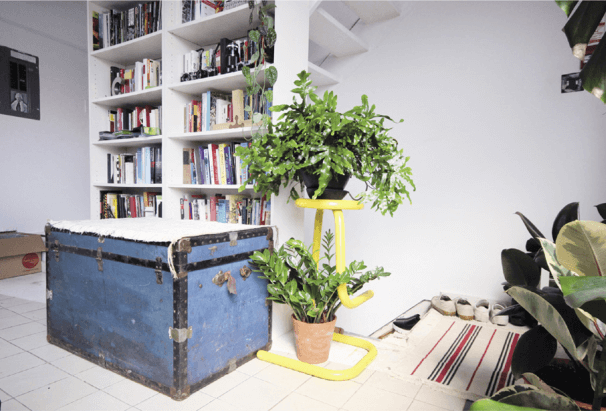
Move aside, Boston and Kimberly Queen ferns, the kangaroo paw fern (Microsorum diversifolium) has just as much charm with easier dead-leaf cleanup! Cleaning up dead leaves is an inevitable part of plant parenthood. The kangaroo paw fern’s fronds, which grow as a pawlike structure in a single unit, are much easier to clean up when they die than the multitude of leaflets left behind by a Boston or Kimberly Queen fern.
Survival strategy
It’s possible to maintain the kangaroo paw fern in a low-light environment—say, around 100 foot-candles. There won’t be much growth, and the once-dense foliage will likely thin out as older fronds die off. New fronds will be slow to emerge, and they will probably have a simpler structure—fewer “fingers.” You can wait for the soil to be completely dry before watering, as long as you gently aerate it with a chopstick so the water can more evenly penetrate. If you happen to give it a thorough soaking, move it to a window shielded from direct sunlight (as with a sheer white curtain) for a few days, so the plant can have a chance to maintain itself.
Growth strategy
At 200 foot-candles or more (even with some direct sun), a kangaroo paw fern will grow wildly! To support good growth at this light level, you should saturate the soil whenever it becomes partially dry—the fronds will be noticeably floppier. Some soil aeration will help to prevent soil compaction. Fertilize when you see new fronds emerging. Hold off if there’s a lull in new growth—the plant is resting. In a year or so, you may find that the plant’s hairy rhizomes have crawled out of the pot. If just a few are peeking out, you can let the plant be, but if they have taken over the exterior of the pot, then you ought to repot. A peat moss/perlite mixture (5:1) will do fine. I have yet to divide my own plant, but it seems quite easy to do—just cut through the root ball with a sharp knife and repot the pieces into separate pots. Caution: The hairs on the rhizomes are somewhat prickly!
Observations from Kangaroo Paw Fern Parenthood
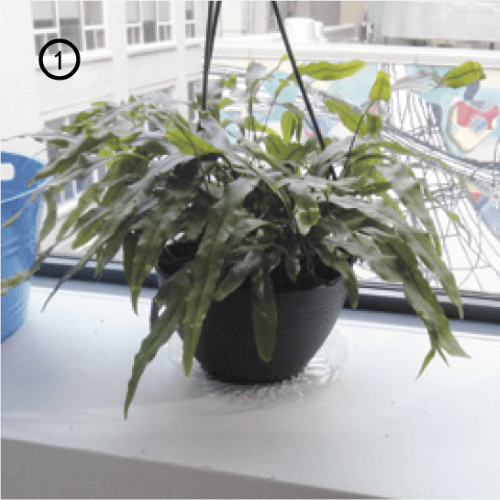
1. Day 1
My office gave me a plant budget! I found this kangaroo paw fern in an 8-inch basket for a good price. It will live in the office kitchen on one of the large, south-facing windowsills. Since there are many tall buildings nearby, the sun is blocked for most of the daytime hours, which classifies this windowsill as being in “shade.” Still, with a good view of the sky, this spot receives an average of 300 foot-candles, with the sun peeking through at odd moments
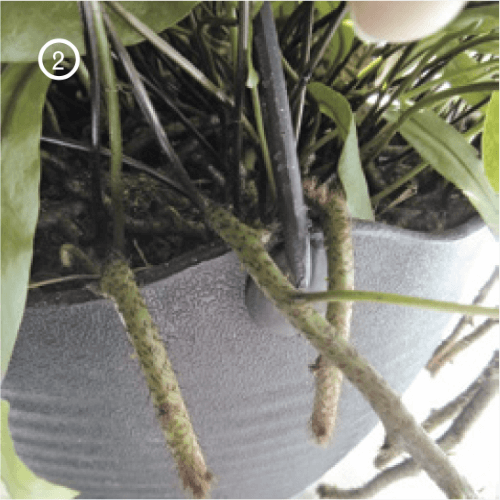 2. 2 months
2. 2 months
Those rhizomes are searching for more soil! The newest fronds (bottom right) are developing from soilless rhizomes!
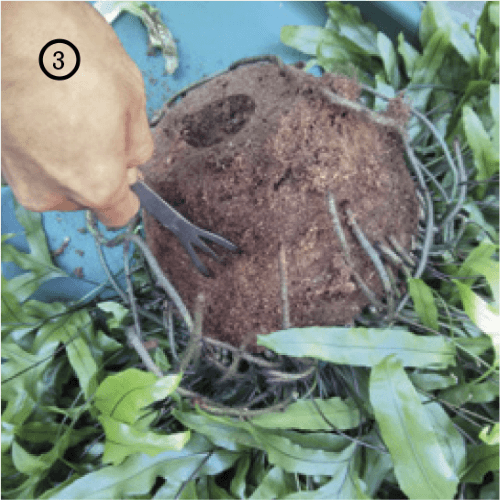 3. 5 months
3. 5 months
Time to repot! It’s important to scrape some old soil away from the root ball so new roots can find the new soil sooner.
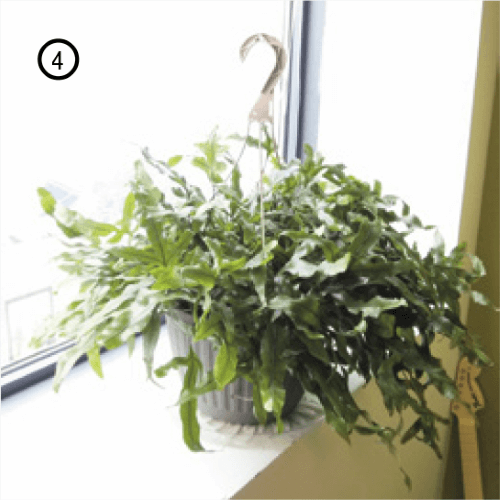
4. 10 months
After several months in its new 12-inch pot, the fern’s new fronds tell me the plant is happy!
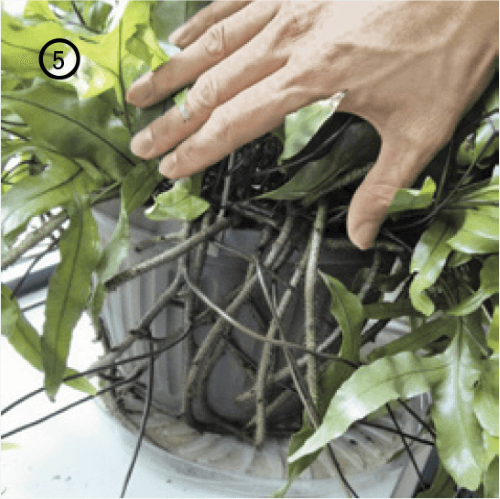
5. 1 year, 7 months
Here we go again with the searching rhizomes!
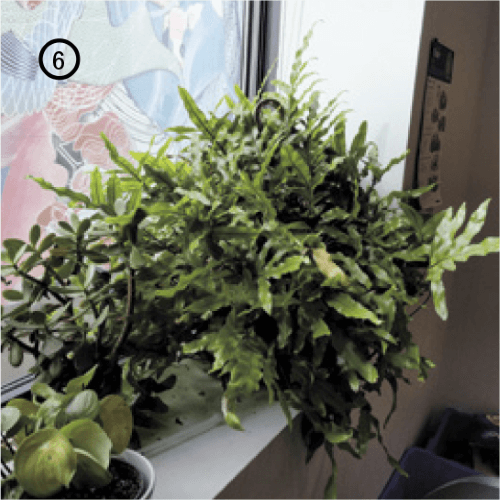
6. 2 years, 5 months
The pot is now hidden from sight as the fronds growing on the outside have matured. Look back at the 10-month photo and see how the plastic hanger is now drowning in fronds!
Kangaroo Paw Fern Frond Development
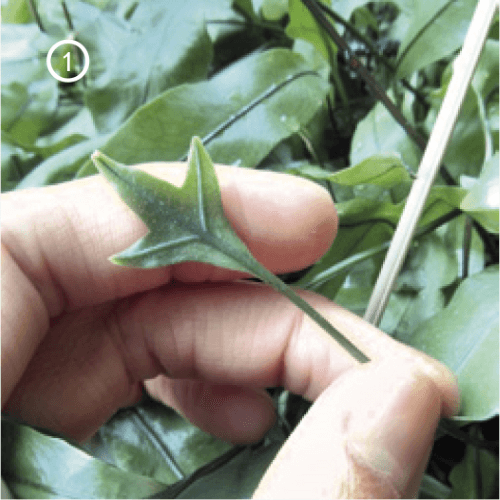
1. Here’s a young, three-fingered frond; as the overall plant matures, newer fronds will emerge with more “fingers.” Fronds do not gain more fingers as they age: This one will always have three fingers.
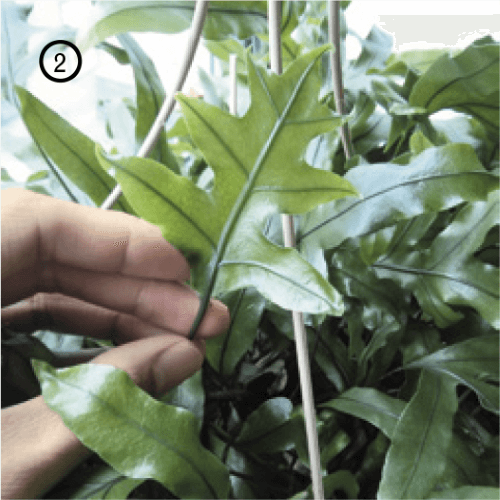
2. Frond complexity: seven fingers!
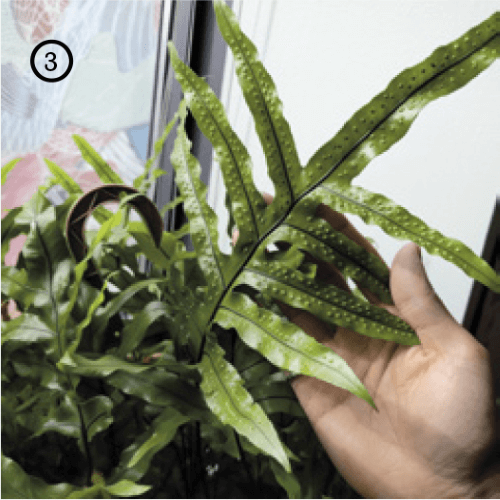
3. When fronds start getting little bumps, they have reached fern puberty. In a few weeks, the undersides of these fronds will develop spores from which new plants can be born!
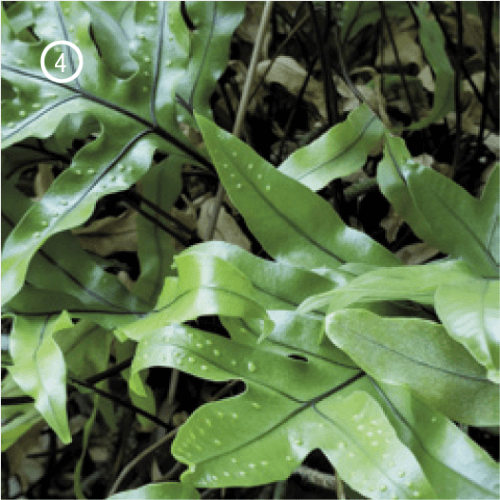
4. Top side of frond: early stages of spore formation.
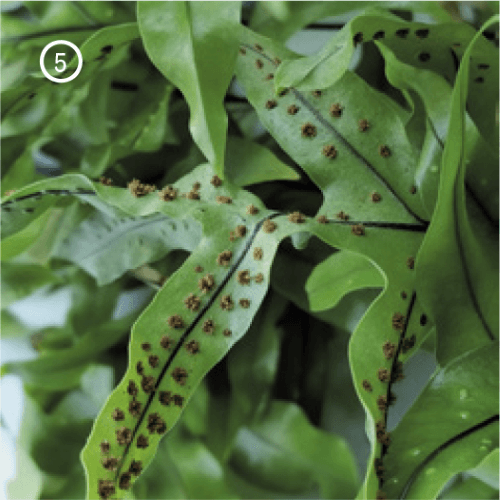
5. Underside of frond: mature spores.
Tiếng Việt
Đang cập nhật
![[Ebook Việt Hoá] New Plant Parent (Darryl Cheng) – Phần 02 – Kangaroo Paw Fern (Microsorum diversifolium) [Ebook Việt Hoá] New Plant Parent (Darryl Cheng) – Phần 02 – Kangaroo Paw Fern (Microsorum diversifolium)](https://vn1.vdrive.vn/codai.net/2021/02/14-kangaroo-paw-fern.jpg)



